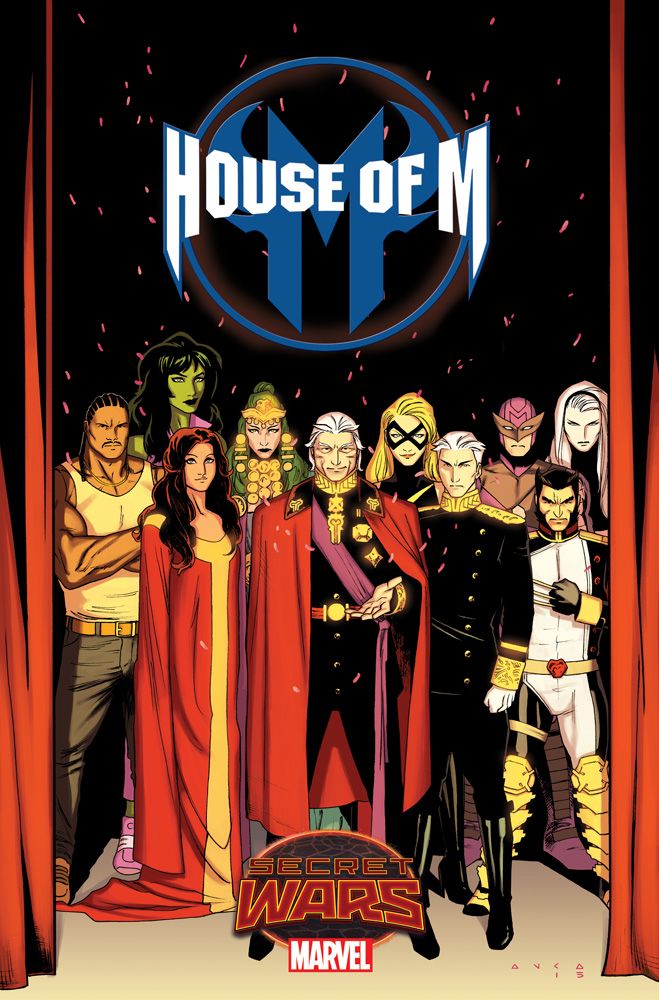It's a bright and sunny day in Genosha, although not for its leader, his family nor anyone who's not a mutant in Dennis Hopeless and Marco Failla's "House of M" #1. Set in essentially the same reality as Marvel Comics' decade-old event of the same name, this "Secret Wars" tie-in continues the story of King Magnus, the former Magneto, who rules over a seemingly utopic world dominated by mutants while his children and grandchildren act as both helpers and hindrances, depending upon their own agendas. The family drama isn't unlike that of a reality TV series, and it works to varying degrees that make this introductory issue a mix of emotion and exposition.
Hopeless uses a lot of standard archetypes that, for the most part, work successfully but tread very close to being stereotypes. Magnus is the victorious but discontent ruling figure, who has the world (or this region of Battleworld, anyway) at his magnetic fingertips, but nonetheless privately harkens back to a self-admittedly more difficult time. His character shares a lot of page time with others, so Hopeless doesn't give himself much opportunity to explore Magnus and, as a result, this incarnation of Magneto -- historically a very-well defined character -- is shallow and one-dimensional here.
His daughter Wanda is even more flat and linear, as her role is largely that of a frustrated parent trying to keep her two teenage twins in check, a far cry from the character who reshaped a world (twice) in the original series. The twins themselves are mainly seen from afar and play the royal family's expected young troublemakers. However, Hopeless seems to focus most of his creative effort on Pietro's character, whose impatient, arrogant and duplicitous nature is spot-on and easily the issue's most compelling central figure.
Artist Marco Failla's effort is successful overall but suffers from some inconsistencies; he does much better in wide, open spaces like the royal family's palatial estate, which is pleasantly bright and airy with an assist from pastels provided by colorist Matt Wilson. However, he struggles with confined spaces, which is where Hopeless' story calls for several characters to appear and is also the setting for the issue's battle sequence; as one character guts and maims a few others, the moments are conveyed more through letterer Joe Caramagna's word balloons than Failla's visuals.
Failla also struggles with facial construction in spots; his style for faces is generally more caricature-like, which is fine, but his inconsistency with same yields some painful looking results. A quiet sequence with Magnus near the end of the issue has him looking almost mummified in a couple of panels. Failla also uses the same facial features on many different characters.
The issue ends on a high note, with a surprising twist that caps off an introductory chapter which lays out an enticing world and a tense conflict. "House of M" #1 struggles in spots but is a competent kickoff that's just strong enough to sell the next issue.

